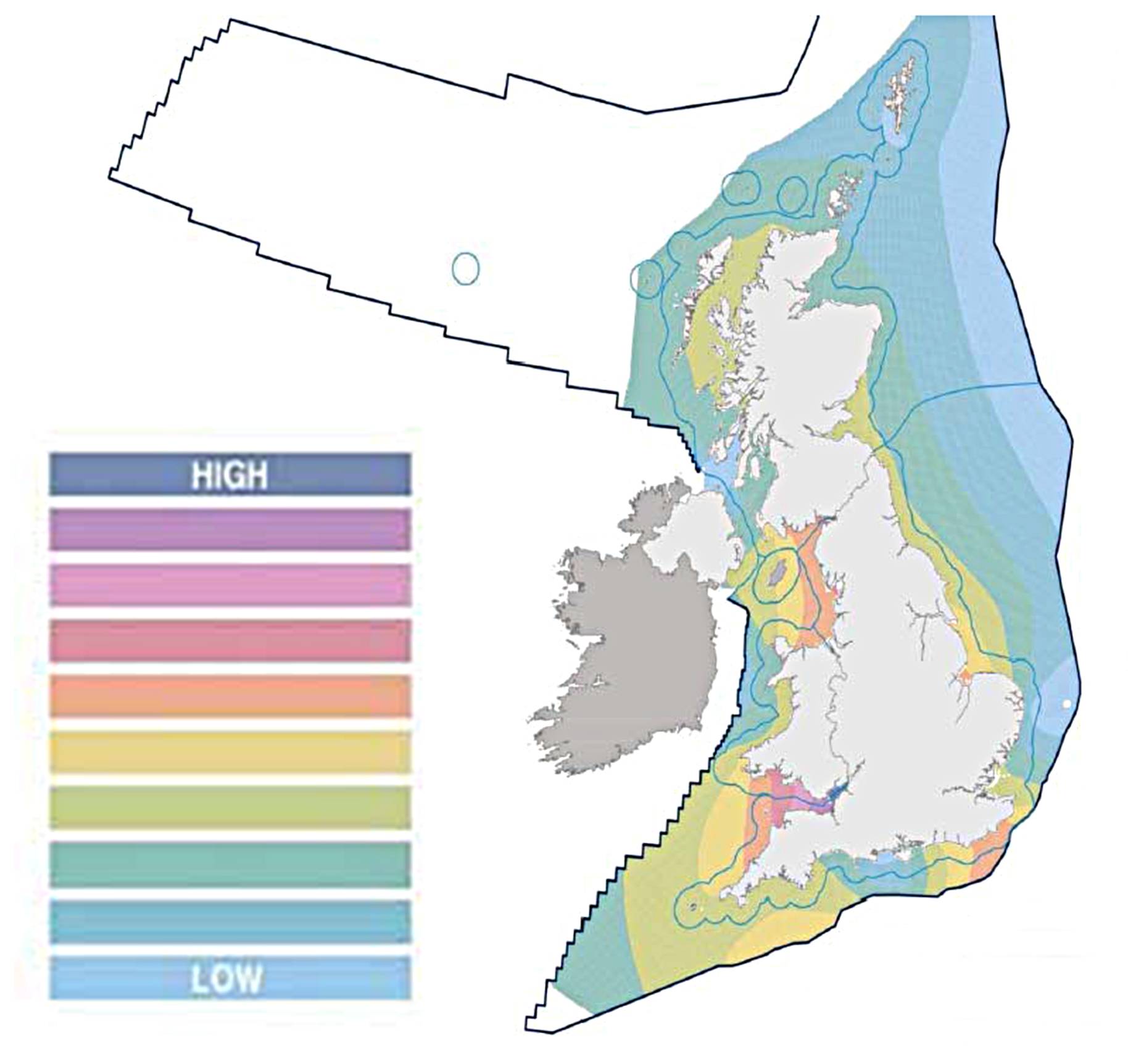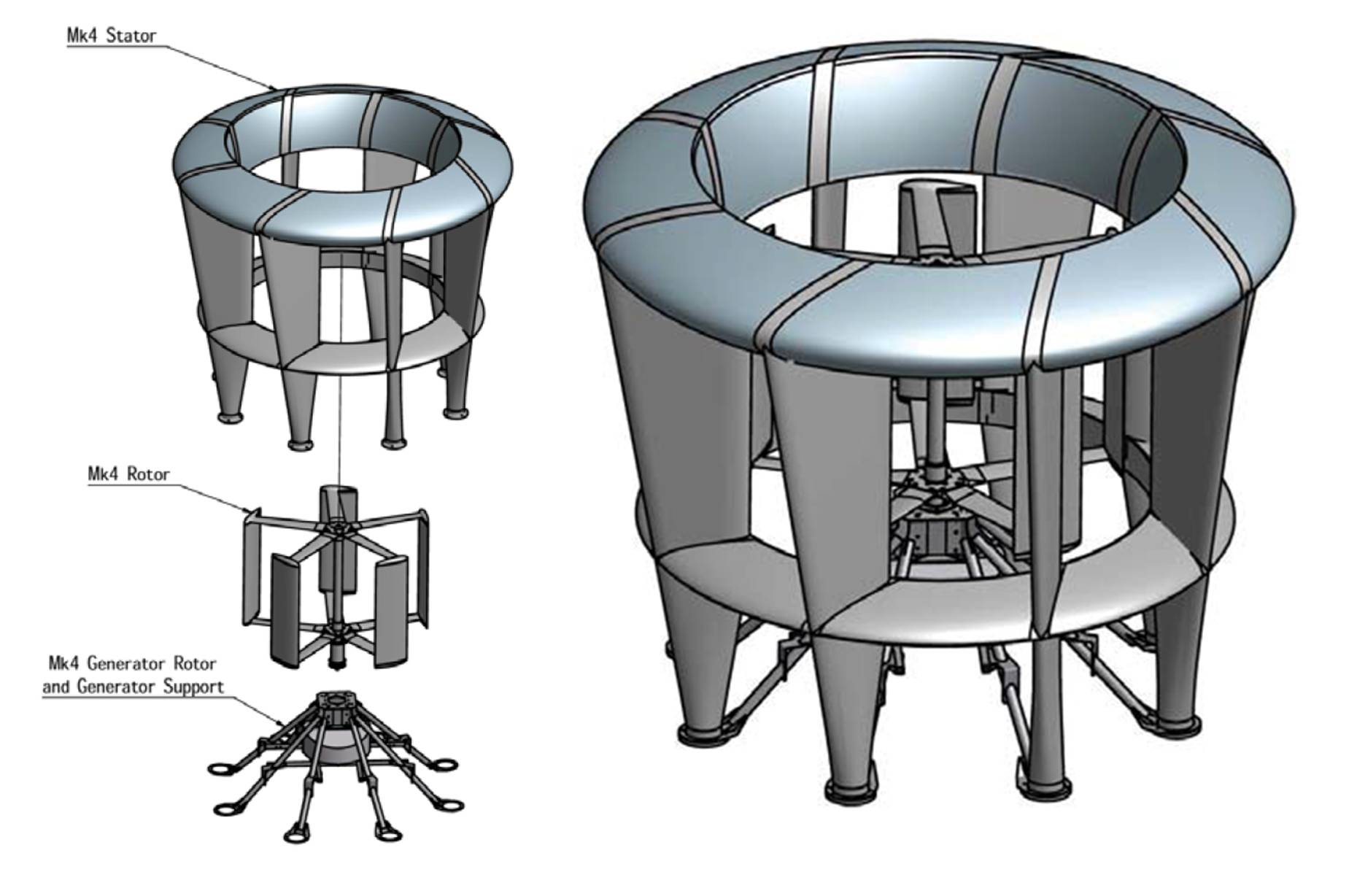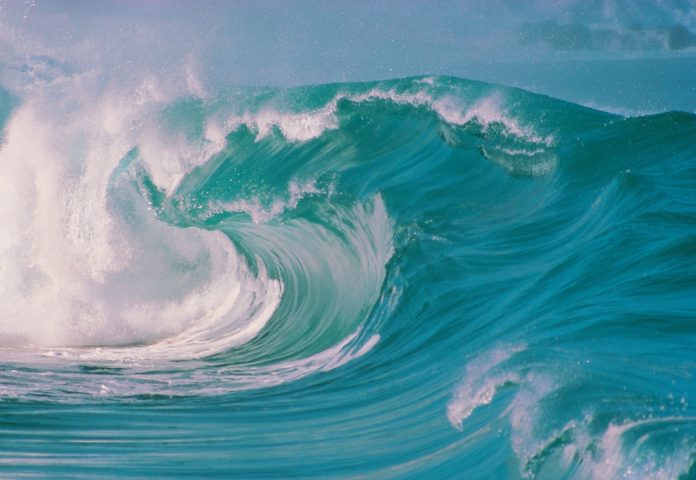The UK government estimates that tidal power could meet around 20% of our electricity demands, an amount which could change the dynamics of energy
This equates to an installed capacity of around 30 – 50 gigawatts delivering in the region of 90 – 200 terawatt hours per year. Given the UK is entirely surrounded by water we have the natural resources available to achieve this and much more.
The Crown Estate has surveyed and mapped the UK’s coastal areas, identifying the most advantageous locations for tidal turbines as detailed in the image below:

Tidal power functions in a similar way to wind power. Tidal turbines are positioned underwater and when the tide changes the turbine blades turn producing electricity. However, unlike solar and wind, tidal power is not weather reliant and because it’s determined by the Moon, making it predictable and reliable, but until now the uptake of tidal power has been very slow because it comes with extremely high upfront costs.
The development challenge is to deliver either higher performance, allowing this cost to be recovered more quickly, or lower the upfront cost. Current designs all follow a very similar path, which reduces the prospects of a breakthrough in terms of lowering costs by any meaningful margin, but that could be about the change.
A senior aerodynamics design engineer at Boeing, Andrew McCamley, who spent several years developing and testing a unique wind turbine design, has been able to adapt his vertical axis wind turbine (VAWT) design for use under water.
McCamley used his experience and knowledge of advanced aerodynamics and incorporated airplane materials science to influence his VAWT design, which was extensively tested and modified in the early stages of testing at the Boeing wind tunnel testing facility in Germany, which is used to aid the design of commercial and military aircraft.
This resulted in some unique and distinct advantages over traditional wind turbines. Whereas commercial wind turbines need power to start, irrespective of wind strength and they also shut off when the wind gets too strong, to prevent catastrophic failure, the McCamley VAWT both self starts in very low winds and can continue to operate in very high winds with no shut off or brakes required. Another significant advantage over traditional wind turbines is the McCamley VAWT, being of a circular design, operates irrespective of the direction of the wind.
Other advantages of the McCamley VAWT are they are silent in operation, they are bird and bat friendly and they are vibration free. Whilst these advantages are relevant in the wind power arena, they are not when operating under water.
There is also a stand out design feature of the McCamley VAWT, which makes it unique. All wind turbines are limited by a law of physics referred to as the Betz Law. According to Betz’s law, no turbine can capture more than 16/27 (59.3%) of the kinetic energy in wind. However, the McCamley turbine design incorporates a “stator”, which in simple terms, is a funnel that directs wind into the blades from outside their normal range. The best commercially available wind turbines in today’s market achieve at peak 75–80% of the Betz Law, whereas the McCamley turbine achieves in excess of 107% of the Betz Law.

The stator enables the McCamley design to exceed the limits set out by the Betz Law, making it the most efficient wind turbine ever developed. When one considers that air has a density of about 1.2 g per litre, and water has a density of about 1 kg per litre, the design advantages are amplified further when used in water.
Early testing of the McCamley water turbine delivered similarly impressive power output results. The McCamley design, as in the wind sector, delivers far more in terms of efficiency, far outperforming other currently available water turbine designs.
The McCamley design also has some other distinct advantages over its competitors. Bio-fouling occurs when plants and animals attach themselves to underwater constructions as often seen on the hulls of ships. However, bio-fouling also alters the hydrodynamics of submerged tidal turbines, presenting a productivity problem.
Bio-fouling organisms attach themselves to the surface of turbine blades making them rougher, which increases losses due to friction and therefore reduces the efficiency of the turbine. This, in turn, will lower performance and make it less cost-efficient. However, the McCamley design isn’t of steel composition as it adopts aircraft materials science and uses a polymer coated fibreglass. This reduces bio-fouling to practically zero. The materials used also have a significantly longer life span as they are not susceptible to rusting.
The main advantage however, which overcomes the biggest current downside to the tidal power sector, is the significant reduction in upfront costs. The McCamley water turbine only costs around 30% of the best priced alternatives. The cost to power output ratio is therefore in a league of its own and represents the technology best placed turn the tide, propelling tidal power to the forefront of renewable energy production in the UK.











